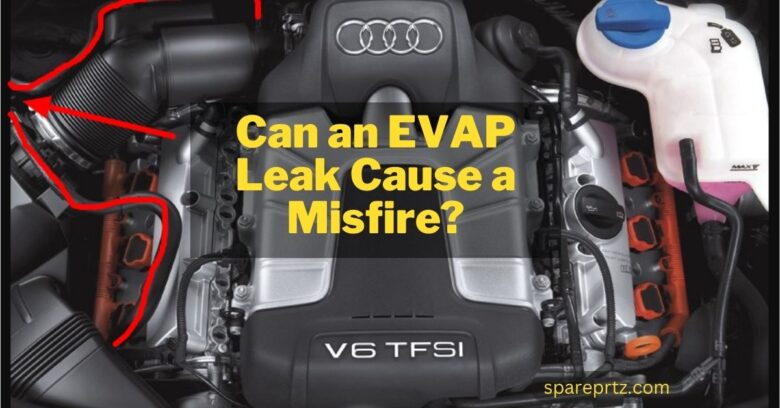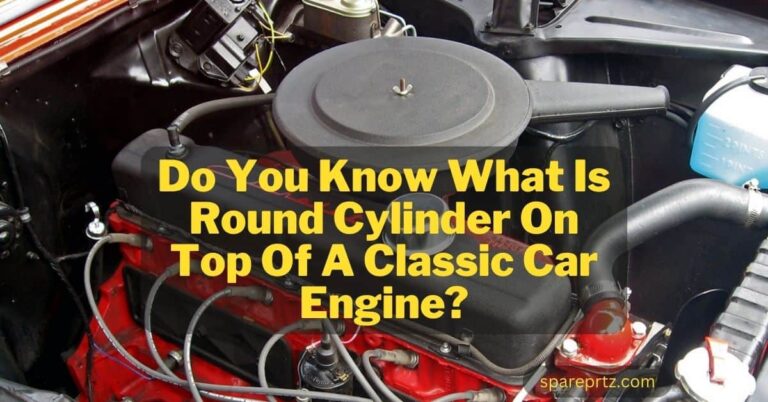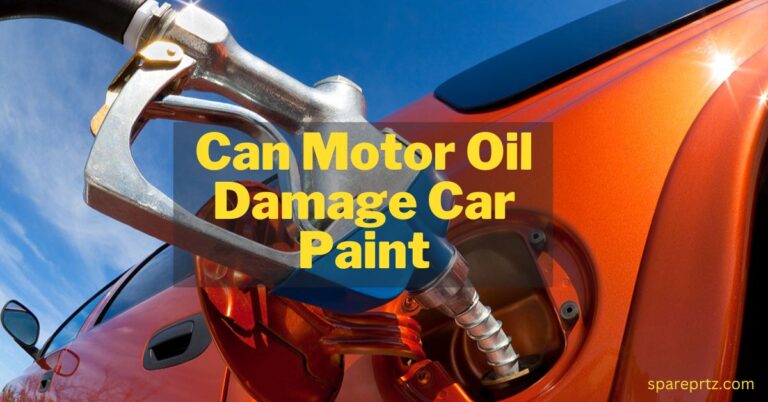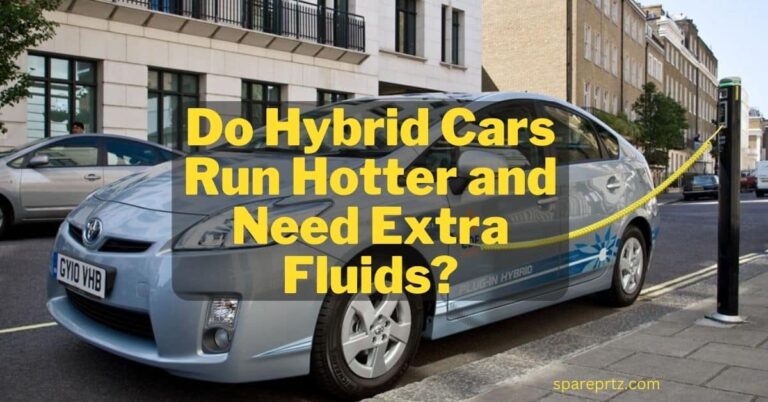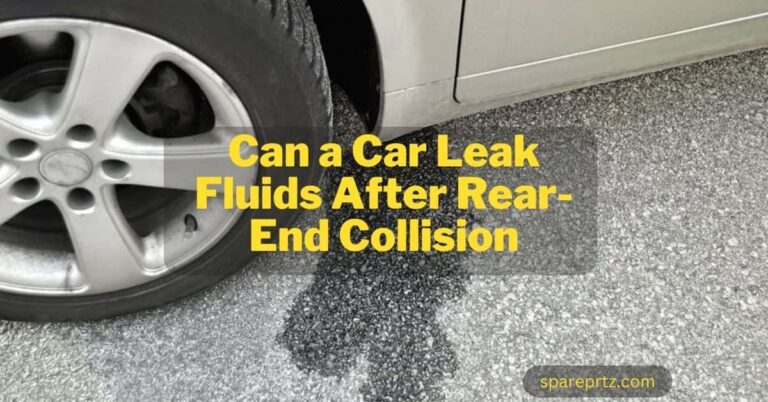Can an EVAP Leak Cause a Misfire? Causes and Fixes
Picture your car as a big puzzle. Two important pieces of this puzzle are the EVAP system, which manages harmful gases, and the engine, which makes your car go. Here’s the interesting twist: sometimes, a tiny issue with the EVAP system can affect how the engine works, causing what’s called a “misfire.”
So the answer to your question is Yes, an EVAP leak can cause a misfire in your engine. This happens mainly by messing up the air-fuel mixture, reducing fuel pressure, or introducing strange fumes, making your engine run unevenly.
But you don’t need to worry; here we discuss the causes and symptoms of Misfire due to a leak of EVAP. This will help you to diagnose the exact problem and fix it. Let’s dive deep into the main headings.
- 1 How Does an EVAP Leak Cause a Misfire?
- 2 Symptoms of EVAP Leak Leading to Misfire in the Engine:
- 3 How Do You Find Leaks in the EVAP System That Cause Misfire?
- 4 Fixing EVAP System Leaks causes Misfire:
- 5 How to Prevent an EVAP Leak From Causing a Misfire?
- 6 Frequently Asked Questions:
- 7 Most Related Articles:
How Does an EVAP Leak Cause a Misfire?
An EVAP (Evaporative Emission Control System) leak can cause a misfire in the engine through several mechanisms:
1. Lean Air-Fuel Mixture:
When there’s an EVAP leak, it can introduce extra air into the engine that hasn’t been properly measured by the engine’s control system. This additional air dilutes the air-fuel mixture, making it “leaner” (having more air and less fuel) than the engine expects.
An excessively lean mixture can lead to incomplete combustion, causing the engine to misfire. Essentially, it’s like trying to play a musical tune with the wrong notes; the engine stumbles because it’s not getting the right balance of air and fuel.
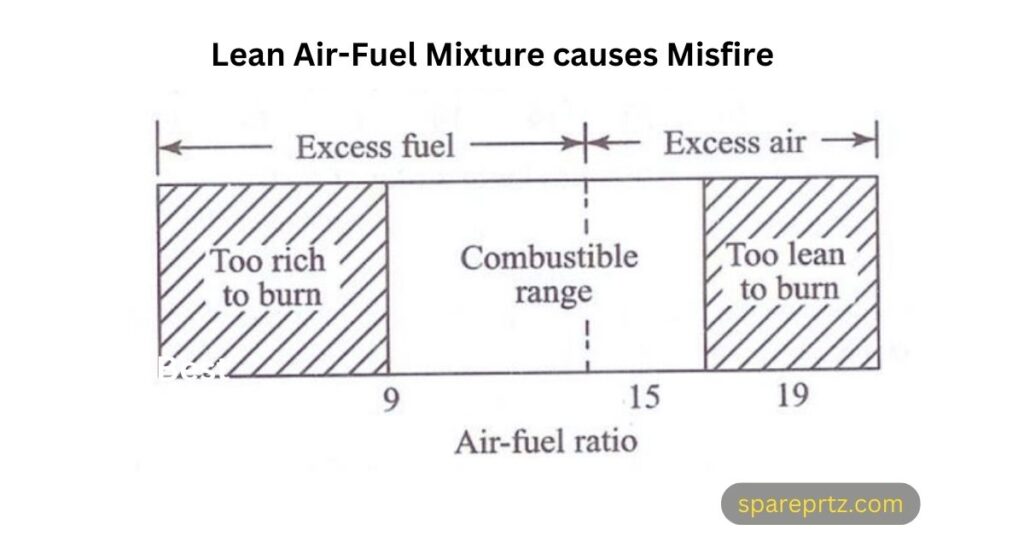
2. Incorrect Fuel Pressure:
In some cases, an EVAP leak can affect the fuel pressure in the system. If the fuel pressure drops due to the leak, the engine may not receive an adequate amount of fuel, leading to a lean air-fuel mixture. As mentioned earlier, a lean mixture can result in misfires.
3. Fuel Vapor Contamination:
An EVAP system is designed to capture and store fuel vapor, preventing it from escaping into the atmosphere. If there’s a leak, it can allow these fuel vapors to enter the engine. These vapors are not meant to be part of the combustion process and can interfere with the engine’s ability to burn regular gasoline effectively, causing misfires.
4. Vacuum Leak:
Some EVAP components are connected to the engine intake manifold and operate based on vacuum. If there’s a leak in the EVAP system, it can disrupt the vacuum balance in the engine. This can, in turn, affect the engine’s ability to draw in the right amount of air and fuel, leading to misfires.
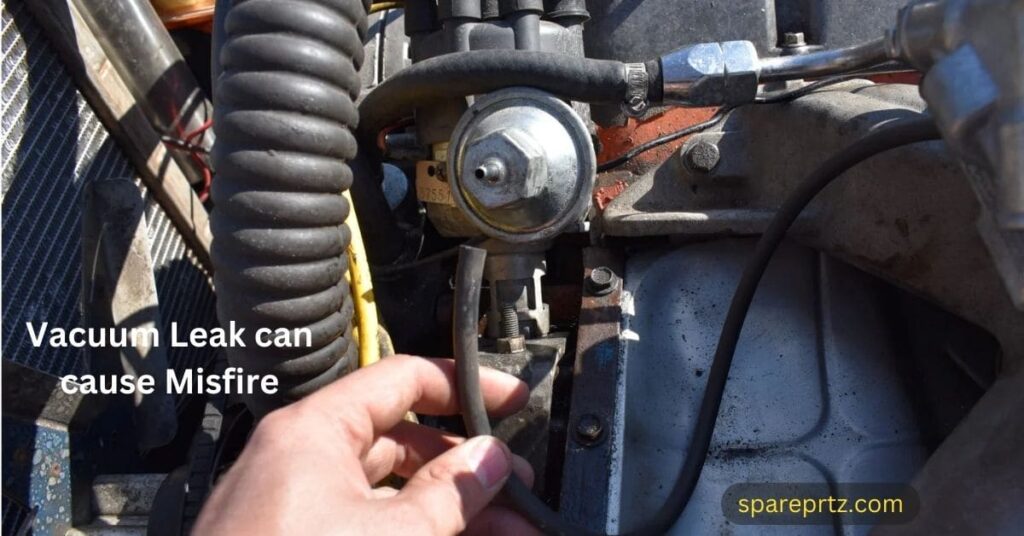
Note:
It is important to note that an EVAP leak is not always the cause of a misfire in the engine. Other things that can cause a misfire include:
- Faulty spark plugs or wires
- Clogged fuel injectors
- Faulty ignition coil
- Vacuum leaks are caused by other components, such as the intake manifold gasket.
Symptoms of EVAP Leak Leading to Misfire in the Engine:
It’s worth mentioning that not every EVAP leak results in a misfire. The symptoms can vary based on the leak’s size and location. The Driver can sense the leak by the given signs and symptoms of an EVAP leak.
- Check the engine light on
- Strong fuel smell
- Poor fuel economy
- Rough idle
- Stalling
- Misfiring
- Reduced engine power
- Hesitation on acceleration
- Backfiring
- Increased emissions
- Black smoke from the exhaust
How Do You Find Leaks in the EVAP System That Cause Misfire?
If the EVAP system leaks, the solution usually comes to replace that damaged part that causes leaks. So to find that part it is important to understand the diagnostic method of EVAP leaks.
Visual Inspection:
Start by looking at your EVAP system, including hoses, connections, and parts, for any obvious signs of damage, cracks, or loose parts.
Check Your Gas Cap:
Make sure your gas cap is tightly closed and in good condition because a loose or damaged gas cap can cause EVAP leaks.
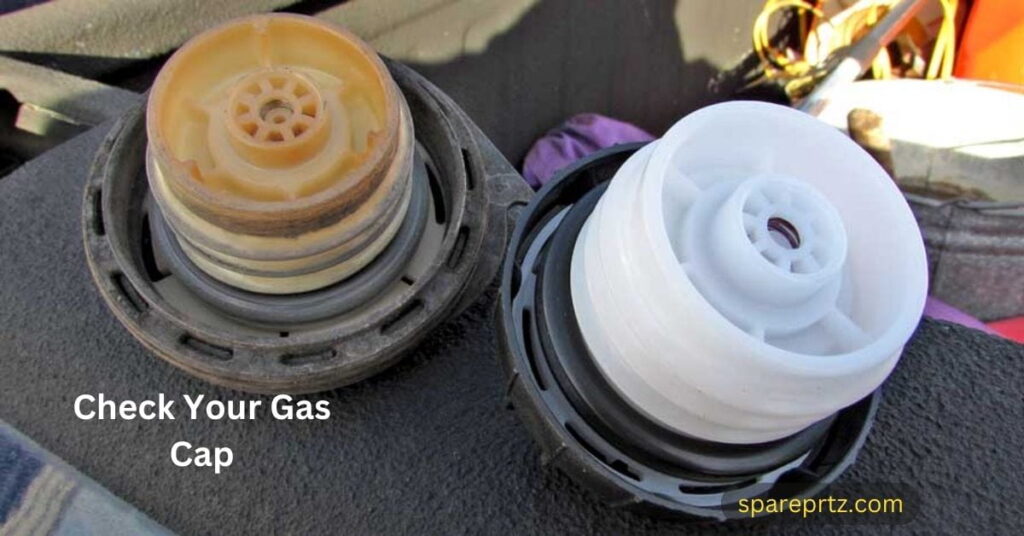
Use a Scan Tool:
Connect an OBD-II scan tool to your vehicle’s computer to see if there are any trouble codes related to the EVAP system. These codes can give you a clue about where the leak might be that causes a misfire.
Try a Smoke Test:
To make leaks visible, use a smoke machine. Connect it to your EVAP system, close all vents and valves, and then introduce smoke. If there’s a leak, you’ll see smoke escaping.
Procedure for Smoke Test:
- Connect the smoke machine to your EVAP system.
- Close all vents and valves.
- Introduce smoke into the system.
- Look for visible smoke escaping, which indicates a leak.
Attempt a Soap Test:
Apply a soap and water solution to the EVAP system components. Any leaks will cause bubbles to form, making them easy to spot.
Procedure for Soap Test:
- Mix dish soap with water to create a soapy solution.
- Apply the solution to the EVAP system components.
- Look for bubbles, as they indicate leaks.
Fixing EVAP System Leaks causes Misfire:
Fix the Leak: Repair or replace the part or hose that’s causing the leak. This could involve patching a cracked hose, changing a damaged valve, or fixing a problematic seal.
Re-Test: After the repair, re-test the EVAP system to confirm that the leak is gone.
How to Prevent an EVAP Leak From Causing a Misfire?
By following these steps, you can identify and fix EVAP system leaks on your own without the
Keep Fuel Tank Half Full: Try to keep your gas tank at least halfway full. This reduces the amount of fuel vapor in the EVAP system, preventing leaks.
Inspect EVAP System: Look at the parts of your EVAP system for cracks, holes, or wear and tear. If you see any damage, get it fixed right away.
Regular Check-Ups: Have a mechanic check your EVAP system during your car’s regular check-ups. This helps catch problems early.
Shady Parking: Park your car in the shade when you can. This keeps the EVAP system cooler and less likely to wear out.
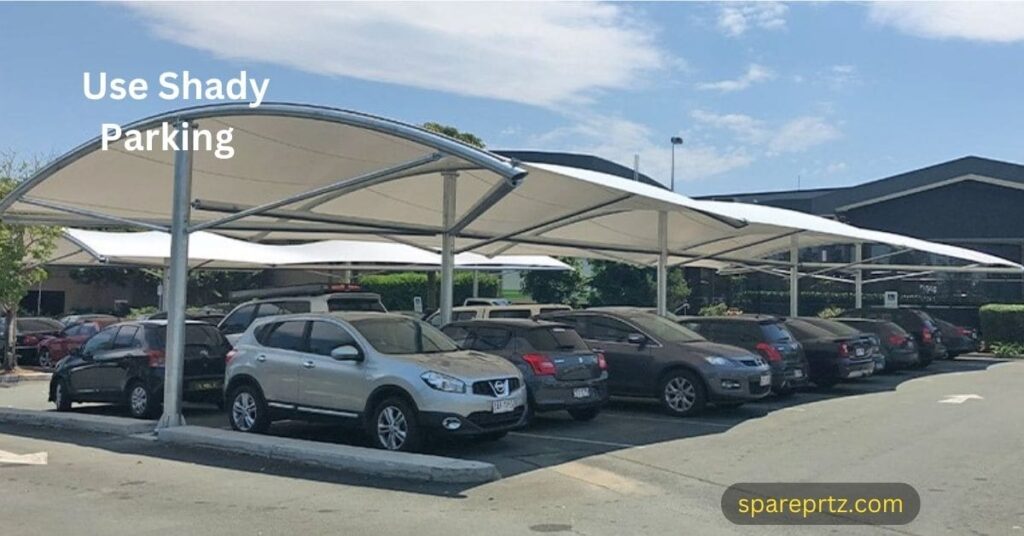
Use Fuel Additives: Consider using a special fuel additive designed to clean and protect the EVAP system. It helps keep things working well.
Frequently Asked Questions:
Q1: How long can people drive with an EVAP leak?
You can typically continue driving with an EVAP leak for a period without immediate safety concerns. However, it may cause the check engine light to illuminate, reduce fuel efficiency, and impact emissions. It’s advisable to address the issue promptly to prevent potential complications and maintain your vehicle’s performance.
Q4: Can an EVAP leak lead to reduced fuel efficiency?
Yes, an EVAP leak can indeed cause reduced fuel efficiency. It disrupts the proper balance of air and fuel in your engine, leading to wasted fuel and lower gas mileage.
Q3: Can an EVAP leak result in difficulty starting the engine?
Yes, an EVAP leak can cause difficulty starting the engine. It can allow extra air into the system, making it harder for your engine to ignite and start smoothly.
Conclusion:
In conclusion, when it comes to cars, even small problems like a leak in the EVAP system can cause misfires. It’s like a hiccup in the engine’s performance. To prevent this Misfire in the car, make sure your gas tank isn’t too empty or too full.
Regularly check your gas cap and inspect the EVAP system for damage. If you do these things and get issues fixed early, your car will run smoothly, save fuel, and have fewer problems in the long run.
Most Related Articles:
- What Is Round Cylinder On Top Of A Classic Car Engine? All About Air Filters in 2024
- Can You Use Pledge on Car Interior: Impact of Pledge on Different Parts of Car
- What Would Happen if You Mixed Up the Trans-Cooling Lines? – Disastrous Consequences
- Do Hybrid Cars Run Hotter and Need Extra Fluids? – Unveiling the Green Engineering
- How to Remove Sunscreen Stains From Leather Car Interior

